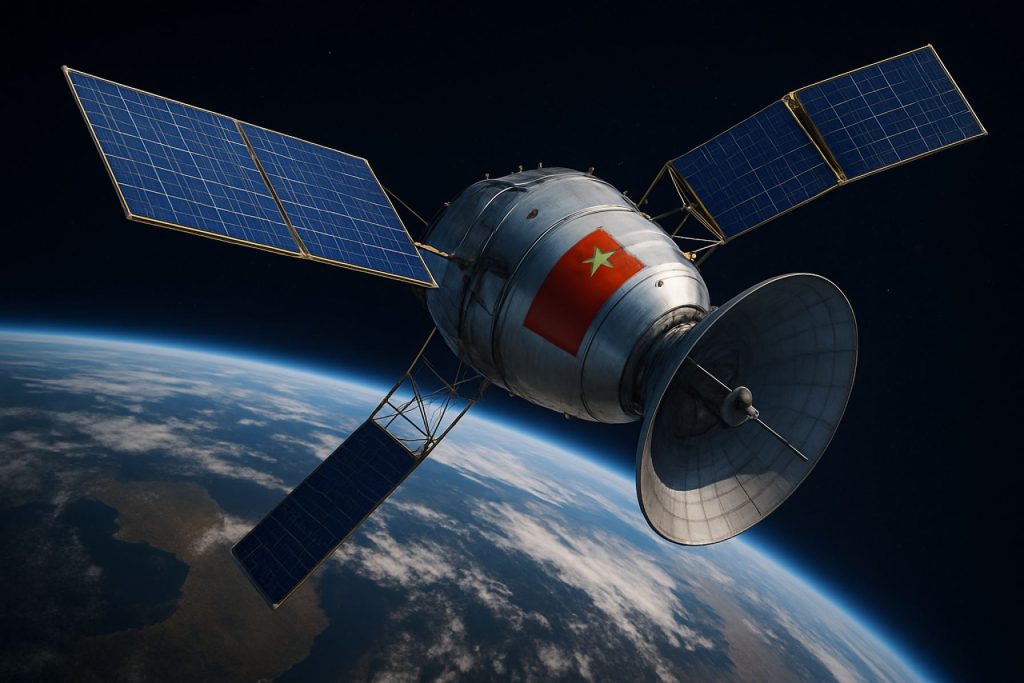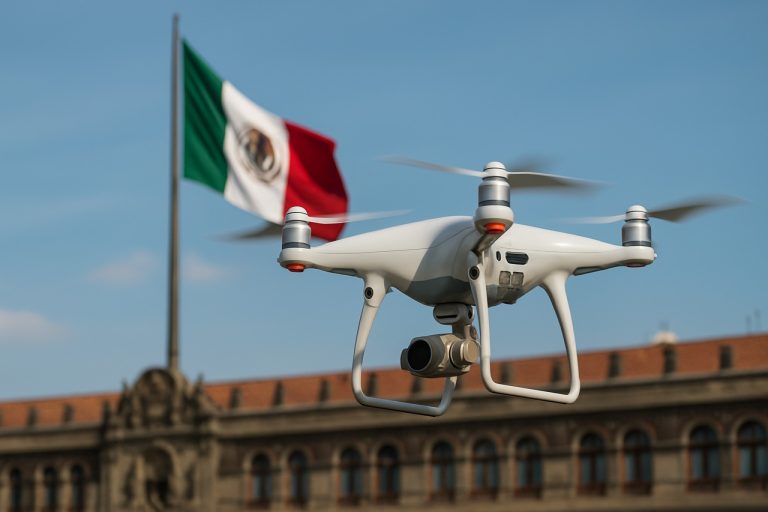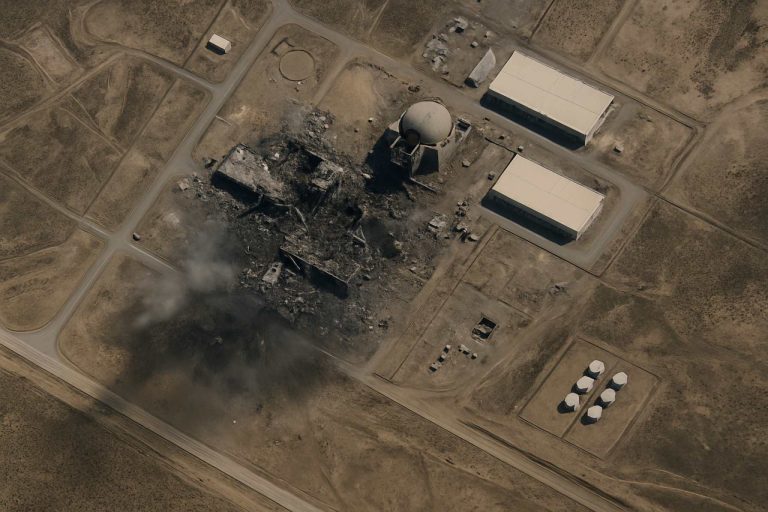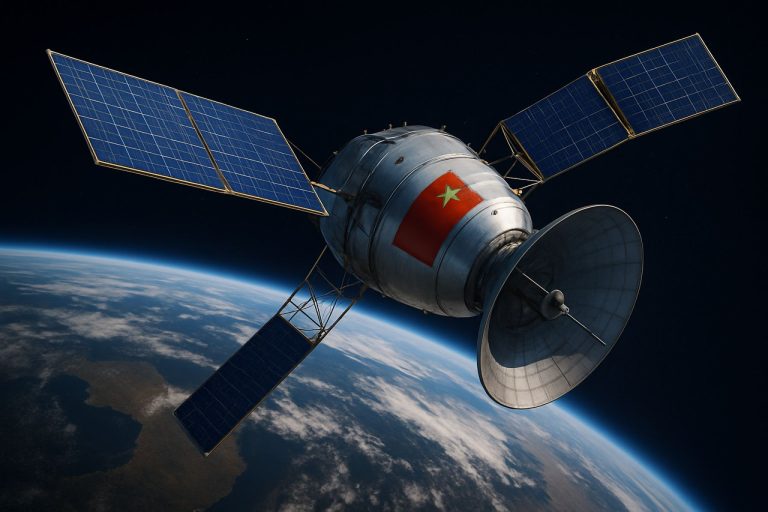
Inside China’s Space Empire: Unveiling the Satellites, Services, and Hidden Power of CNSA
- Mapping China’s Space Sector: Market Size and Key Segments
- Emerging Technologies Shaping China’s Space Ambitions
- Key Players and Strategic Alliances in China’s Space Industry
- Projected Expansion and Investment Trends in China’s Space Market
- China’s Space Activities: Regional Footprint and Global Reach
- What Lies Ahead: The Next Phase of China’s Space Program
- Barriers, Risks, and Strategic Opportunities in China’s Space Ecosystem
- Sources & References
“Major Industry Announcements (June–July 2025) Waymo’s Expansion and Tesla’s Trials: Alphabet’s Waymo continued to scale up its robotaxi operations.” (source)
Mapping China’s Space Sector: Market Size and Key Segments
China’s space sector has rapidly evolved into one of the world’s most formidable, driven by a blend of state ambition, commercial innovation, and strategic priorities. The China National Space Administration (CNSA) sits at the heart of this ecosystem, orchestrating a vast network of state-owned enterprises, private companies, and research institutes. As of 2023, China’s space industry is valued at approximately US$12 billion, with projections to reach $1 trillion by 2040, reflecting aggressive investment and policy support.
- Satellites: China is the world’s second-largest satellite operator, with over 600 satellites in orbit as of early 2024 (UCS Satellite Database). The sector is dominated by state-owned giants like China Aerospace Science and Technology Corporation (CASC) and China Aerospace Science and Industry Corporation (CASIC), but private firms such as GalaxySpace and Commsat are gaining ground. China’s satellite output spans communications, Earth observation, navigation (notably the BeiDou system), and scientific research.
- Space Services: The downstream market—encompassing satellite communications, remote sensing data, and navigation services—has seen double-digit growth. BeiDou, China’s answer to GPS, now supports over 1.5 billion devices worldwide (SCMP). Commercial applications range from logistics and agriculture to disaster management, with the government actively promoting public-private partnerships to expand service offerings.
- Launch Capabilities: China conducted 67 orbital launches in 2023, second only to the United States (SpaceNews). The Long March rocket family remains the backbone, but new commercial launch providers like iSpace and LandSpace are introducing reusable and methane-fueled rockets, signaling a shift toward cost efficiency and innovation.
- The CNSA’s Strategic Role: The CNSA not only sets policy and funds major projects but also acts as a gatekeeper, controlling access to critical technologies and international partnerships. Its dual-use approach—serving both civilian and military objectives—gives China’s space sector a unique edge, enabling rapid mobilization of resources and alignment with national security goals (CNAS).
In summary, China’s space empire is a tightly integrated system where satellites, services, and the CNSA’s strategic oversight combine to drive growth, innovation, and geopolitical influence.
Emerging Technologies Shaping China’s Space Ambitions
China’s space ambitions have accelerated rapidly in the past decade, driven by a combination of state-led investment, technological innovation, and a strategic vision to rival the United States and other space powers. At the heart of this expansion is the China National Space Administration (CNSA), which orchestrates a vast network of satellites, services, and emerging technologies that underpin both civilian and military objectives.
Satellites: Expanding Constellations and Capabilities
- Beidou Navigation System: China’s answer to GPS, the Beidou system achieved global coverage in 2020 with over 40 satellites in orbit. It now supports navigation, timing, and messaging services for more than 120 countries, and is integral to China’s digital infrastructure (SCMP).
- Earth Observation: The Gaofen series of high-resolution satellites provide real-time imaging for agriculture, disaster response, and urban planning. As of 2023, China operates over 250 remote sensing satellites, making it the world’s second-largest operator after the US (SpaceNews).
- Communications: The Tianlian and Shijian satellites support secure military and civilian communications, with new quantum-encrypted satellites like Mozi pioneering ultra-secure data links (Nature).
Services: From Commercial Launches to Data Platforms
- Commercial Launch Services: CNSA and private firms like CASC and iSpace have made China the world’s second-largest launch provider, with 67 launches in 2023 alone (SpaceNews).
- Data and Analytics: CNSA’s open data platforms and partnerships with tech giants like Alibaba are fueling a new wave of space-based applications, from smart cities to autonomous vehicles (Alizila).
The Secret Power of CNSA: Integration and Dual-Use Technologies
CNSA’s unique strength lies in its integration of civilian and military space assets, enabling rapid technology transfer and coordinated development. Emerging technologies such as AI-driven satellite tasking, quantum communications, and reusable launch vehicles are central to China’s ambition to lead in space. This dual-use approach, combined with state-backed funding and a growing commercial sector, positions China as a formidable space power with global reach and influence (CNAS).
Key Players and Strategic Alliances in China’s Space Industry
China’s space industry has rapidly evolved into a formidable global force, driven by a combination of state-led initiatives, commercial innovation, and strategic alliances. At the heart of this expansion is the China National Space Administration (CNSA), the government agency responsible for the planning and execution of China’s space activities. CNSA orchestrates a vast network of state-owned enterprises, private companies, and research institutions, positioning China as a leader in satellite technology, launch services, and space-based applications.
- Satellites and Constellations: China operates one of the world’s largest satellite fleets, with over 600 satellites in orbit as of early 2024 (UCS Satellite Database). The BeiDou Navigation Satellite System is a flagship project, rivaling the U.S. GPS and the EU’s Galileo, and providing global positioning services to over 120 countries. China’s Earth observation satellites, such as the Gaofen series, support applications in agriculture, disaster management, and urban planning.
- Launch Services: The China Aerospace Science and Technology Corporation (CASC) and China Aerospace Science and Industry Corporation (CASIC) dominate the launch sector, with the Long March rocket family achieving a record 67 launches in 2023 (SpaceNews). Emerging private firms like LandSpace and Galactic Energy are pioneering reusable rocket technologies, signaling a shift toward commercial competitiveness.
- Strategic Alliances: China leverages international partnerships to expand its space influence. The China-Brazil Earth Resources Satellite (CBERS) program exemplifies successful collaboration, while the International Lunar Research Station project with Russia aims to rival NASA’s Artemis program. China also offers satellite services and infrastructure to Belt and Road Initiative (BRI) countries, deepening geopolitical ties.
- The Secret Power of CNSA: CNSA’s centralized control enables rapid mobilization of resources and alignment with national priorities. Its dual-use approach—integrating civilian and military objectives—has raised concerns among Western analysts about the potential for space-based intelligence and defense capabilities (CNAS).
In summary, China’s space empire is underpinned by a robust ecosystem of key players and strategic alliances, with CNSA wielding significant influence over both technological advancement and geopolitical strategy.
Projected Expansion and Investment Trends in China’s Space Market
China’s space sector is undergoing rapid transformation, with the China National Space Administration (CNSA) at the helm of an ambitious expansion strategy. As of 2024, China operates the world’s second-largest fleet of satellites, with over 600 satellites in orbit, supporting applications from communications to Earth observation (Union of Concerned Scientists). The government’s 14th Five-Year Plan (2021-2025) earmarks space as a strategic industry, targeting breakthroughs in satellite constellations, deep space exploration, and commercial space services (South China Morning Post).
- Satellite Expansion: China aims to have over 1,000 satellites in orbit by 2027, with a focus on the Guowang low-Earth orbit (LEO) broadband constellation, which is expected to rival SpaceX’s Starlink in scale and capability (SpaceNews).
- Commercialization and Investment: The Chinese commercial space sector attracted more than $2 billion in investment in 2023, with over 200 private companies now active in satellite manufacturing, launch services, and downstream applications (Nature).
- Service Ecosystem: CNSA is fostering a robust ecosystem for satellite-based services, including navigation (BeiDou), remote sensing, and secure communications, which are increasingly integrated into China’s digital economy and Belt and Road Initiative projects (Global Times).
- Strategic Power: CNSA’s dual-use approach—blending civilian and military objectives—has positioned China as a formidable space power. The agency’s close ties with state-owned enterprises and the People’s Liberation Army (PLA) enable rapid technology transfer and deployment, raising concerns among global competitors (CNAS).
Looking ahead, China’s space ambitions are set to intensify. The government is prioritizing lunar and Mars missions, reusable launch vehicles, and quantum communications satellites. With CNSA’s centralized command and strong state backing, China’s space empire is poised for continued growth, challenging the dominance of established players and reshaping the global space economy.
China’s Space Activities: Regional Footprint and Global Reach
China’s space ambitions have rapidly evolved from modest beginnings to a formidable global presence, driven by the China National Space Administration (CNSA). As of 2024, China operates the world’s second-largest fleet of active satellites, with over 700 satellites in orbit, supporting a wide array of applications from communications and navigation to earth observation and scientific research (Union of Concerned Scientists).
The CNSA’s satellite programs are central to China’s regional and global influence. The BeiDou Navigation Satellite System, completed in 2020, now rivals the U.S. GPS, providing global positioning services to more than 120 countries, particularly across Asia, Africa, and Latin America (South China Morning Post). BeiDou’s integration into critical infrastructure, logistics, and military systems in partner nations enhances China’s soft power and technological leverage.
China’s earth observation satellites, such as the Gaofen series, deliver high-resolution imagery for environmental monitoring, disaster response, and resource management. These services are increasingly exported through the Digital Silk Road initiative, part of the broader Belt and Road framework, offering developing countries access to advanced space-based data and analytics (Brookings Institution).
Beyond civilian applications, the CNSA’s dual-use technologies blur the line between commercial and military space assets. The rapid deployment of relay, reconnaissance, and anti-satellite capabilities has raised concerns among regional neighbors and global powers about the strategic intent behind China’s space expansion (U.S. Department of Defense).
- Satellite Services: China offers turnkey satellite launches, ground station support, and data services to emerging space nations, positioning itself as a cost-effective alternative to Western providers.
- Regional Footprint: CNSA-led projects in Pakistan, Laos, and Nigeria have established China as a key enabler of space access in the Global South (SpaceNews).
- Global Reach: China’s lunar and Mars missions, as well as its Tiangong space station, signal ambitions for deep space leadership and international collaboration.
In summary, the CNSA’s expanding satellite empire and service offerings are reshaping the global space landscape, intertwining commercial, diplomatic, and strategic interests in ways that extend far beyond China’s borders.
What Lies Ahead: The Next Phase of China’s Space Program
China’s space ambitions have rapidly evolved from basic satellite launches to a comprehensive, state-driven space ecosystem. At the heart of this transformation is the China National Space Administration (CNSA), which orchestrates a vast network of satellites, commercial services, and strategic initiatives that extend China’s influence both in orbit and on Earth.
Satellites: Expanding Constellations and Capabilities
- Beidou Navigation System: China’s answer to GPS, the Beidou system, now comprises over 45 satellites, providing global positioning services to more than 120 countries. In 2023, Beidou’s market share in Asia-Pacific navigation services surpassed 30%, reflecting its growing international adoption (SCMP).
- Earth Observation: The Gaofen series, part of the China High-resolution Earth Observation System (CHEOS), delivers high-resolution imagery for agriculture, disaster response, and urban planning. As of 2024, over 20 Gaofen satellites are operational, supporting both civilian and military applications (NASASpaceflight).
- Communications: ChinaSat and Hongyun constellations are expanding broadband coverage, with plans for over 13,000 low-Earth orbit (LEO) satellites to rival Starlink and OneWeb (SpaceNews).
Services: Commercialization and Global Reach
- Satellite Services: CNSA-backed companies like China Great Wall Industry Corporation (CGWIC) offer launch and satellite services to international clients, capturing a growing share of the global commercial launch market (CGWIC).
- Data and Analytics: Chinese firms leverage satellite data for smart cities, environmental monitoring, and logistics, with the domestic satellite data market projected to reach $10 billion by 2025 (China Daily).
The Secret Power of CNSA: Strategic Integration
CNSA’s unique strength lies in its integration of civilian, commercial, and military objectives. The agency’s dual-use technologies blur the lines between peaceful exploration and national security, enabling China to project power in space and secure critical infrastructure. This strategic approach, combined with state-backed funding and policy support, positions CNSA as a formidable force shaping the future of global space competition (CNAS).
Barriers, Risks, and Strategic Opportunities in China’s Space Ecosystem
China’s space ecosystem has rapidly evolved into one of the world’s most ambitious and multifaceted, driven by the China National Space Administration (CNSA). The CNSA orchestrates a vast network of state-owned enterprises, private firms, and research institutions, positioning China as a formidable player in satellite manufacturing, launch services, and downstream applications. As of 2023, China operated over 600 satellites, making it the second-largest satellite operator globally, just behind the United States (Union of Concerned Scientists).
Barriers and Risks
- Regulatory Hurdles: China’s space sector is tightly regulated, with the CNSA and the State Administration of Science, Technology and Industry for National Defense (SASTIND) controlling access to launch facilities, spectrum allocation, and export licenses. This centralization can stifle private innovation and limit foreign collaboration (Nature).
- Geopolitical Tensions: U.S.-China rivalry has led to export controls and restrictions on technology transfer, particularly in sensitive areas like satellite components and launch technology. The U.S. International Traffic in Arms Regulations (ITAR) effectively bars Chinese entities from accessing key Western technologies (Reuters).
- Market Fragmentation: While China’s domestic market is vast, international expansion is hampered by political mistrust and concerns over data security, especially in Belt and Road Initiative (BRI) partner countries.
- Intellectual Property Risks: Foreign firms face risks of IP leakage and forced technology transfer when partnering with Chinese entities, a persistent concern for global investors and collaborators.
Strategic Opportunities
- Satellite Constellations: China’s “Guowang” project aims to deploy over 13,000 low-Earth orbit (LEO) satellites, rivaling Starlink and OneWeb, to provide global broadband and IoT connectivity (SpaceNews).
- Downstream Services: The Beidou Navigation Satellite System (BDS) underpins a growing ecosystem of location-based services, logistics, and smart city applications, with the BDS market valued at over $156 billion in 2022 (Global Times).
- International Partnerships: Despite Western restrictions, China is deepening space cooperation with Russia, the Middle East, and Africa, offering launch services, satellite data, and joint missions.
- Commercialization: The rise of private Chinese space companies, such as iSpace and Galactic Energy, is fostering innovation in launch vehicles, small satellites, and space-based services, supported by government incentives and venture capital (SCMP).
In summary, while China’s space empire faces significant regulatory and geopolitical barriers, the CNSA’s centralized power and strategic vision continue to unlock new commercial and technological opportunities, reshaping the global space landscape.
Sources & References
- Inside China’s Space Empire: Satellites, Services, and the Secret Power of CNSA
- Union of Concerned Scientists
- SCMP
- SpaceNews
- CNAS
- Nature
- Alizila
- China National Space Administration (CNSA)
- China Aerospace Science and Technology Corporation (CASC)
- LandSpace
- Galactic Energy
- China Daily
- Global Times
- Brookings Institution
- NASASpaceflight
- CGWIC



